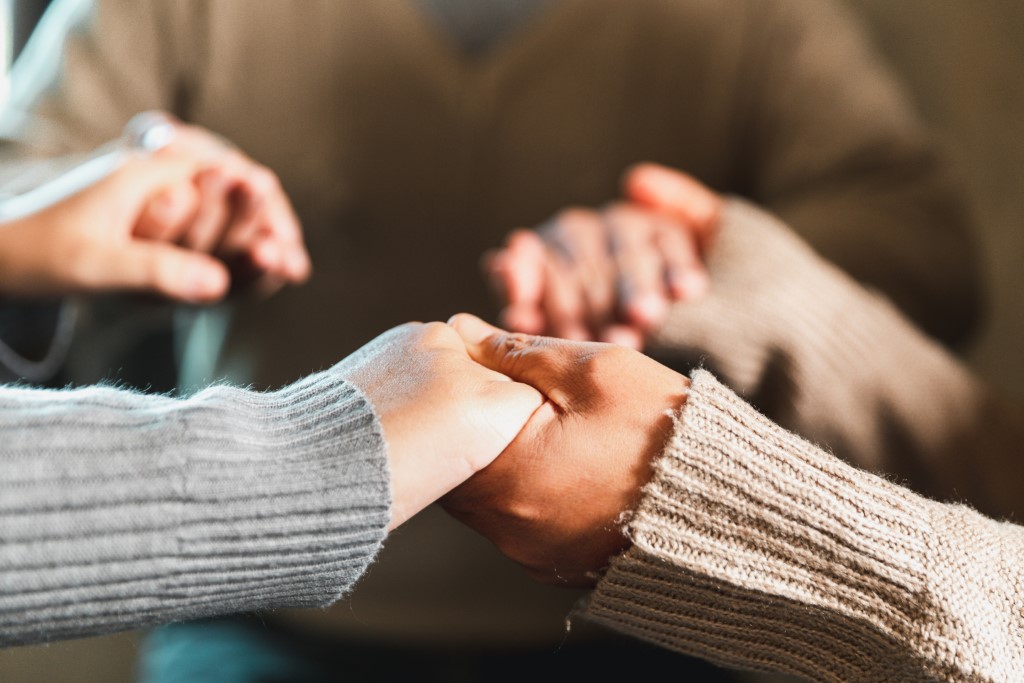The car ride home from rehab feels like victory. You’ve waited, prayed, fought, and finally, they did it. They finished treatment. You can breathe again. The nightmare’s over. Except it’s not.
What most families aren’t told is that the end of rehab is not the end of addiction. It’s the beginning of recovery, a much longer, messier, and lonelier road. The truth is, the days after rehab can be some of the most fragile, confusing, and dangerous in an addict’s life. And for families, it’s when reality sets in, this isn’t the finish line. It’s the first lap.
The Illusion of “Fixed”
Rehab gives structure. Wake up at 6 AM. Group therapy at 10. Meals at set times. Check-ins. Accountability. Safety. Inside that bubble, addicts start to heal. They eat properly, sleep, reflect, and reconnect with the version of themselves they’d forgotten existed. Families start to exhale. For the first time in years, hope returns.
But that hope can quietly morph into a dangerous assumption, that treatment has “fixed” the problem. You want to believe the nightmare is behind you. The house feels lighter, their voice sounds clearer, their eyes look alive again. But addiction doesn’t dissolve in 28 or 90 days. It waits.
Recovery isn’t a switch, it’s a discipline. Rehab detoxes the body and stabilises the mind, but it can’t rewrite years of patterns, triggers, and emotional habits overnight. Once the addict leaves the safety of that environment, the real test begins, one that happens in a world that still sells alcohol, still offers temptation, and still doesn’t care that you just got clean.
The Emotional Crash After Rehab
Many addicts describe their first few weeks out of rehab as a kind of emotional hangover, the same way your body feels after a long binge, except this time it’s psychological. Inside treatment, everything is controlled. There’s community, guidance, therapy, and support 24/7. Then suddenly, it’s gone.
They come home to bills, family tension, old friends, and expectations. Everyone’s walking on eggshells, proud but cautious, loving but scared. There’s pressure to “stay strong,” to prove that rehab worked. But underneath that pressure, there’s fear, confusion, and fatigue.
The addict feels it too. The structure they relied on has vanished, and they’re expected to hold it all together. The world moves fast, and they feel behind. Some relapse not because they don’t want recovery, but because the silence and responsibility after rehab feel heavier than the chaos that came before.
This emotional crash doesn’t mean failure. It means detox is over, now the real healing begins.
Families in the Recovery Fog
Families often go through their own kind of hangover after rehab. For months, they’ve been living in crisis mode, managing chaos, waiting for calls, bracing for disaster. When the addict enters treatment, the adrenaline finally drops, and so does everyone else.
That’s when the exhaustion hits. The grief. The anger. The resentment. Families realise how much of themselves they lost trying to save someone else. But most never seek help for it. They assume recovery is about the addict, not them.
This is one of the biggest mistakes families make. Addiction is a family disease, and everyone needs recovery. The person who used the drugs may have detoxed, but the people who lived around it are still emotionally raw. Without support, families often relapse into their own patterns, over-controlling, rescuing, or avoiding.
When families stay sick, the addict feels it. And the cycle starts again.
The Post-Rehab Gap
Most rehabs do their best, but once you walk out the door, you enter what’s known as the gap, the space between treatment and long-term stability. It’s where most relapses happen. Not because rehab failed, but because recovery doesn’t exist in isolation.
Aftercare is where the bridge should be built, but too often, it’s treated as optional. A few check-ins, a weekly group, maybe a phone call from a counsellor. That’s not enough. The first six months after treatment are critical. This is when triggers reappear, boredom, loneliness, social pressure, unresolved trauma, or the crushing weight of responsibility.
Without a structured aftercare plan, therapy, support groups, accountability, and family involvement, recovery becomes guesswork. Addicts are told to “stay strong,” but strength without strategy is just strain.
The truth is, relapse prevention is not about willpower. It’s about preparation.
The Danger of Overconfidence
After rehab, there’s often a “pink cloud” phase, a period where everything feels amazing. The addict feels reborn. The family feels united. The world seems full of possibilities. This optimism is good, it builds momentum. But it’s also risky.
In this phase, many addicts think they’re cured. They start cutting corners, skipping meetings, ghosting their counsellor, reconnecting with old friends “just to catch up.” They feel invincible, forgetting how quickly the spiral happens.
Addiction recovery is not about avoiding substances; it’s about rebuilding an entire way of living. The moment someone believes they’ve outgrown the process, they start slipping back toward the old one.
Families need to watch for signs of overconfidence:
- Dismissing support systems as unnecessary.
- Withdrawing from new sober communities.
- Minimising the seriousness of their past.
- Romanticising “controlled use.”
Relapse doesn’t start with using. It starts with forgetting.
The Role Families Play After Rehab
Families often walk a tightrope between support and control. They want to help but are terrified of enabling. They want to trust but are scared to get hurt again. So they oscillate, overprotect one day, withdraw the next.
The truth is, post-rehab recovery requires families to change too. The rules that applied before treatment no longer fit. The addict is no longer the enemy, they’re a person learning to live again. Families must shift from managing to mentoring, offering accountability without control, compassion without chaos.
Practical steps help:
- Attend family support meetings (like Al-Anon or private groups).
- Set clear boundaries around honesty, money, and behaviour.
- Learn the difference between relapse prevention and codependence.
- Encourage therapy for everyone, not just the addict.
When families participate in recovery, relapse risk drops dramatically. Because healing is contagious, if one person grows, the whole system starts to change.
What “Success” Actually Looks Like
Success after rehab isn’t measured by perfection, it’s measured by progress. The goal isn’t to never struggle again; it’s to keep showing up when you do.
A year of sobriety isn’t just twelve clean months. It’s hundreds of small victories: resisting old urges, choosing honesty over avoidance, rebuilding trust, sitting with feelings instead of escaping them. It’s calling your sponsor instead of your dealer. It’s apologising without manipulation. It’s showing up sober at Christmas and leaving before the chaos starts.
Families should measure success in the same way. It’s not about the absence of problems, it’s about the presence of growth. Less shouting. More honesty. Fewer secrets. Better nights’ sleep.
Recovery isn’t about being cured. It’s about being real, and real life is messy.
When Relapse Happens
Relapse isn’t inevitable, but it’s common. It doesn’t mean treatment failed, it means recovery needs adjustment.
When relapse happens, families usually react with panic or rage. “After everything we’ve done?” “After all that money?” But relapse isn’t betrayal, it’s communication. It’s the body and brain saying something isn’t working. Maybe aftercare wasn’t strong enough. Maybe therapy stopped too soon. Maybe stress hit harder than support.
The key is to respond, not react. Shame doesn’t create recovery, it kills it. The right response to relapse isn’t punishment; it’s analysis. What broke? What needs reinforcing?
Every relapse carries data. Use it. Don’t throw away months of progress because of one mistake.
Rebuilding Normal Life
Life after rehab isn’t about avoiding the past, it’s about rebuilding a future. That means re-entering jobs, relationships, finances, and responsibilities that were once neglected or destroyed.
This phase is where real resilience is forged. Paying bills sober. Facing conflict sober. Dealing with boredom sober. Each of these moments is a victory disguised as routine. The goal isn’t to return to “normal”, that old life is gone. The goal is to build something better.
Families can help by focusing less on control and more on collaboration. Ask, “What do you need to feel stable this week?” rather than “You’re not going to use again, right?” Support doesn’t mean suspicion. It means safety, and that safety allows growth.
Hope That Lasts
The end of rehab feels like crossing the finish line, but it’s really just the starting gun. Hope without a plan quickly fades into frustration. But hope backed by structure, therapy, support, boundaries, and family healing, turns into stability.
Addiction is a chronic condition, but recovery is a living process. It doesn’t end when rehab does. It keeps evolving, one choice at a time, one honest conversation at a time.
Families who understand that truth stop living in fear of relapse and start living in rhythm with recovery. They learn that hope isn’t a high, it’s a habit.
And when hope becomes a habit, the hangover ends, and healing finally begins.



